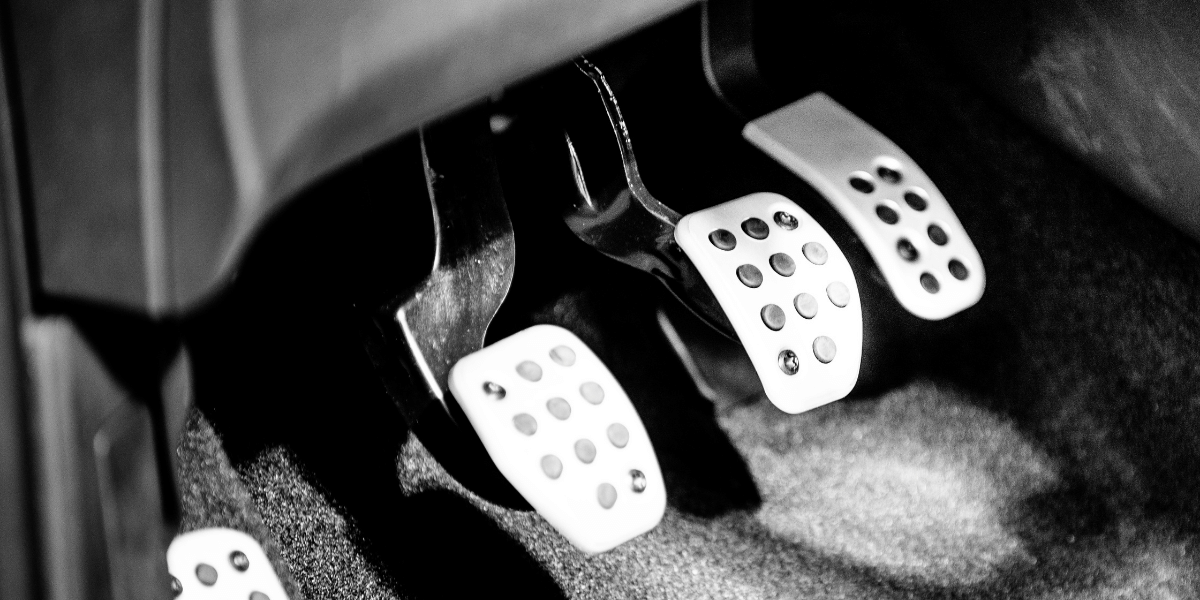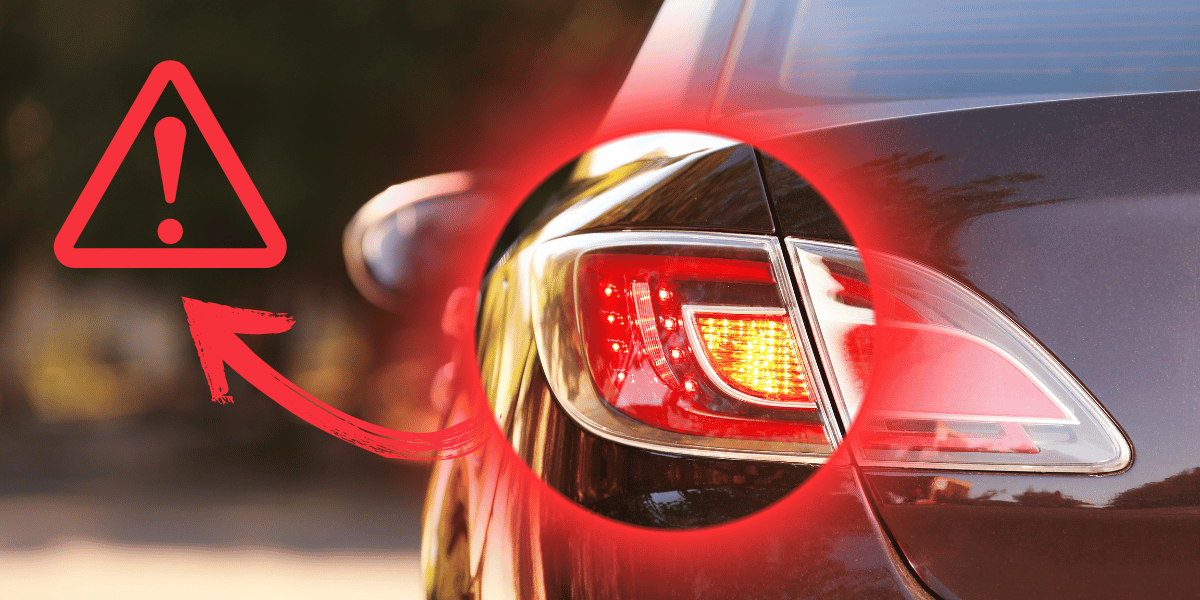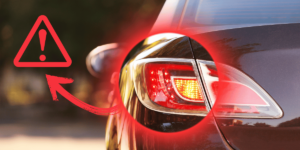It’s pretty easy to reset your MAF sensor, and it can often fix small problems. But keep in mind that you will need to get a new MAF sensor if your old one is broken or not working right. The mass air flow (MAF) sensor is a key part of the engine control system in your car. It tells the computer how much fuel to feed by measuring how much air is going into the engine. When your MAF sensor isn’t working right, it can lead to a number of issues, including rough running, bad gas mileage, and even engine failure.
In this blog post, we will show you how to reset your MAF sensor. We’ll also talk about when and why you should restart your MAF sensor.
What is a Mass Air Flow (MAF) sensor?
With a mass air flow (MAF) gauge, you can find out how fast air is moving into a fuel-injected internal combustion engine. The engine control unit (ECU) needs to know about the air mass in order to balance the fuel mass and send it to the engine in the right way. Temperature and pressure change how dense air is. When used in cars, air density changes depending on the temperature, altitude, and forced induction. Because of this, mass flow sensors are better than volumetric flow sensors for figuring out how much input air is in each cylinder.
Most of the time, the MAF sensor is placed between the air filter and the throttle body. The resistance of a heated wire part is used to make it work. The resistance changes based on how much air flows over the wire part and cools it down. This data is used by the ECU to figure out the mass flow rate of air.
Why is it important?
It’s important to have the MAF sensor because it helps the engine run smoothly and quickly. The amount of air going into the engine is measured, which helps the computer figure out how much fuel to pump. Having a broken MAF sensor can cause the engine to run rich or lean, which can cause many issues, including
- The rough idling
- Holding back during acceleration
- Poor Fuel Economy
- More pollution released
- The Stalling Process
- Damage to the engine
The MAF sensor can also be used to find out what’s wrong with other parts of the engine. Suppose the MAF sensor values are low. This could mean that there is a problem with the air intake system, like an air filter that is clogged or a mass air flow sensor that doesn’t work right. In general, the MAF sensor is a key part of the engine control system that helps the engine run smoothly and efficiently.
When & Why do you need to reset a MAF sensor?
You need to reset your MAF sensor if you experience any of the following problems:
- Rough idling: Your engine is idling rough or stalling.
- Poor fuel economy: You are getting worse fuel economy than usual.
- Hesitation: Your engine hesitates or stumbles when you accelerate.
- Check engine light: Your check engine light is on and the trouble code indicates a problem with the MAF sensor.
You should also reset your MAF sensor if you have cleaned or replaced the sensor. This will help the computer to relearn the sensor’s parameters and ensure that the engine is running properly.
To reset your MAF sensor, you can either disconnect the battery for at least 10 minutes or idle the engine for at least 10 minutes with the MAF sensor disconnected. Once you have reset the sensor, reconnect the battery or MAF sensor and start the engine. The engine may run rough for a few minutes as the computer relearns the sensor’s parameters.
If you have reset your MAF sensor but you are still experiencing problems, it is possible that the sensor is damaged or defective and needs to be replaced. In this case, you should take your car to a qualified mechanic to have the MAF sensor diagnosed and replaced if necessary.
Here are some more tips and safety precautions how to reset your MAF sensor:
- Make sure that the engine is cold before you start the reset process.
- If you are disconnecting the battery, disconnect the negative terminal first and then the positive terminal.
- If you are idling the engine with the MAF sensor disconnected, make sure that the engine is at idle speed.
- After you have reset the sensor, drive the car for a few miles to allow the computer to fully relearn the sensor’s parameters.
If you are unsure how to reset your MAF sensor, it is always best to consult your car’s owner’s manual or take the car to a qualified mechanic.
What are the Benefits of resetting a MAF sensor?
- Improved fuel economy
- Reduced emissions
- Improved performance
- Increased engine life
- May fix minor problems with the MAF sensor.
How to Reset MAF Sensor (Step-by-Step guide)
You can clear a MAF sensor in two ways:
1. Taking the battery away
- Put your car down on a flat surface and turn off the engine.
- To find the negative charge terminal, open the hood. It has a minus sign (-) on it and is sometimes black.
- Loosen the nut on the negative battery connection with a wrench or socket wrench.
- Lift the negative battery wire off the battery post with care.
- We need you to wait 10 minutes.
- Connect the negative end of the battery to the battery post again.
- Tighten the nut on the battery connection that is negative.
- Start the engine and close the hood.
Take these safety steps: Be careful not to use any metal to touch the positive battery contact. It’s possible that this will start a fire.
Do not connect anything to the negative battery terminal at all before you begin the restart process.
Not making the nut on the negative battery connection too tight is important. This could hurt the contact on the battery.
How to Fix Problems: The MAF sensor might not restart even after you take the battery out. This could be a problem with the sensor itself or the wiring harness. To find out what’s wrong with the MAF sensor and whether it needs to be replaced, you should take your car to a skilled mechanic.
2. Idling the engine without the sensor installed
- Put your car down on a flat surface and turn off the engine.
- Get under the car and look for the MAF sensor. Most of the time, it’s between the air filter and the throttle body.
- Take the power cable off of the MAF sensor.
- The MAF sensor needs to be taken out of the air intake device.
- Start the car’s engine and leave it alone for ten minutes.
- The MAF sensor needs to be put back in the air entry system after the engine is turned off.
- Hook up the power plug to the MAF sensor.
- Start your engine and close the hood.
Precautions: Be careful not to touch the parts of the engine that are hot.
Do not connect the MAF sensor to anything at all before you begin the reset process.
Be careful not to tighten the bolts that connect the MAF sensor to the air entry system too much. The MAF sensor could get hurt by this.
How to Fix Problems: Idling the engine without the MAF sensor in place might not have restarted the sensor. If it still hasn’t, there may be a problem with either the sensor or the wiring harness. To find out what’s wrong with the MAF sensor and whether it needs to be replaced, you should take your car to a skilled mechanic.
What to do if your MAF sensor light is still on after resetting the sensor?
There are a few things you can try if the MAF sensor light is still on after that:
Look at the wire harness: Check to see that the wiring wire that goes to the MAF sensor is connected correctly and isn’t broken.
Take care of the MAF sensor: The MAF sensor might not work right if it is dirty. A MAF sensor cleaner can be used to clean the MAF sensor.
Get a new MAF sensor: The MAF sensor will need to be changed if it is broken or not working right.
The MAF sensor light should not be on after checking the wiring harness, cleaning the MAF sensor, and replacing it. This means that there is a problem with the engine control system. In this case, you should get your car checked out by a skilled mechanic who can fix the engine management system.
Other possible causes of MAF sensor problems
Other things that could go wrong with the MAF sensor are:
- Vacuum leaks: If there is a vacuum leak, the MAF sensor might read the wrong amount of air going into the engine. This can cause a lot of issues, such as rough running, bad gas mileage, and the check engine light to come on.
- Air filter that is dirty: If the air filter is dirty, it can block airflow to the engine. This can make the MAF sensor read the wrong amount of air entering the engine. This is like a hoover leak in that it can cause trouble.
- Clogged mass air flow sensor: The mass air flow sensor (MAF sensor) can get stuck with dust, dirt, or oil over time. This can make the monitor think that there is too little air going into the engine, which can cause the same issues as a vacuum leak or a dirty air filter.
- Bad mass air flow sensor: The MAF sensor can also go bad because it is old, worn out, or there was a mistake in the way it was made. Any of the above problems can be caused by a bad MAF sensor.
If you are still experiencing any of the problems associated with a MAF sensor problem, it is good to car inspected by a qualified mechanic to determine the cause of the problem and have it repaired.
When to take your car to a mechanic?
If any of these things happen with your car, you should take it to a mechanic:
- Check engine light on: The “check engine” light is a sign that something is wrong with your car’s engine or emissions system since it is on. If your car’s check engine light is on, you should take it to a mechanic to figure out what’s wrong.
- Listening to or smelling strange things: If your car is making strange sounds or smells, you should have a mechanic check it out to find out what’s wrong.
- Performance problems: If your car isn’t running smoothly, like when it idling rough or when it hesitates when you try to speed up, you should have a mechanic look at it to find out what’s wrong.
- Steering or suspension issues: If your car is having issues with steering or suspension, like moving to one side or feeling loose, you should get it checked out by a mechanic to find out what’s wrong.
- Problems with the brakes: If your car’s brakes aren’t working right, you should get them checked out and fixed by a tech right away.
- Maintenance that is planned: It is important to get your car serviced regularly, following the manufacturer’s maintenance routine. This will help keep your car in good shape and stop problems from happening.
Along with these things, you should also take your car to a mechanic if you’re not sure about something or have any questions about it. It’s better to be safe than sorry.
Types of MAF sensors and how to identify which type is in your car?
There are two main types of MAF sensors:
- Hot wire MAF sensor: A heated wire part is used in a hot wire MAF sensor to measure how much air is moving over it. Since air moves over the wire part more, it gets cooler. The MAF sensor checks how much air is moving over the wire part by measuring how its resistance changes.
- Hot film MAF sensor: Hot film A heated film part is used in this type of MAF sensor to measure how much air is moving over it. Since air moves over the film part more, it gets cooler. The MAF sensor checks how much air is moving over the film element by measuring how its resistance changes.
The owner’s manual for your car or an online search for the MAF sensor for your make, model, and year will help you figure out what kind of sensor is in your car. The type of MAF sensor can also be found by looking at the sensor itself. A thin wire part that can be seen through the sensor housing is common in hot wire MAF sensors. Most hot film MAF sensors have a flat film element that can be seen through the cover of the sensor. There are also MAF devices that can be bought separately. Make sure, though, that the MAF sensor you buy is of good quality and comes from a reliable company.
Which Tools and materials you’ll need to reset your MAF sensor?
Here are the tools and materials you will need to reset your MAF sensor:
- Wrench or socket wrench to disconnect the battery
- MAF sensor cleaner (optional)
- Screwdriver or pliers to remove the MAF sensor (optional)
- Replacement MAF sensor (optional)
If you are disconnecting the battery to reset your MAF sensor, you will also need a pair of gloves and a clean cloth.
If you are cleaning the MAF sensor:
- MAF sensor cleaner
- Clean cloth
If you are replacing the MAF sensor:
- Replacement MAF sensor (specifically designed for your car’s make, model, and year)
- Screwdriver or pliers to remove the MAF sensor
- Wrench or socket wrench to tighten the bolts that secure the MAF sensor to the air intake system
How to reset mass air flow sensor on BMW, Nissan Altima, Mercedes, Ford F-150, Chevrolet Silverado, and other cars?
There are two main ways to reset your MAF sensor in different cars:
- Disconnect the battery: Disconnect the negative battery terminal for at least 10 minutes. This will clear the ECU’s memory and force it to relearn the MAF sensor’s readings.
- Idle the engine: Start the engine and let it idle for at least 10 minutes. This will also force the ECU to relearn the MAF sensor’s readings.
Specific instructions for each car:
- Disconnect the negative battery terminal.
- Wait for 10 minutes.
- Reconnect the negative battery terminal.
- Start the engine and let it idle for 10 minutes.
The steps for resetting the MAF sensor on other cars may vary slightly, but the general process is the same. Consult your car’s owner’s manual for specific instructions.
What to do after replacing mass air flow sensor?
There are a few things you should do after changing your mass air flow (MAF) sensor:
- Reset the engine control unit (ECU): The engine control unit (ECU) needs to be reset. This will help the ECU figure out what the new MAF sensor is telling it. The ECU can be restarted by taking the negative battery terminal off for at least 10 minutes.
- Look for leaks: Make sure the MAF sensor is fixed correctly and that the air entry system doesn’t have any leaks.
- Drive the car for a while: Drive the car around for a while to make sure it works right. Take the car back to the mechanic who changed the MAF sensor if you have any problems, like rough idling, bad gas mileage, or hesitating when you try to speed up.
How to trick a mass air flow sensor?
There are a few ways to trick a mass air flow (MAF) sensor. However, it is important to note that doing so can have negative consequences for your car’s engine.
- One way to trick a MAF sensor is to use a resistor. A resistor is a device that resists the flow of electricity. By placing a resistor in the MAF sensor circuit, you can reduce the amount of voltage that the MAF sensor receives. This can cause the MAF sensor to read a lower amount of air entering the engine, which can lead to the engine running rich.
- Another way to trick a MAF sensor is to use a vacuum leak. A vacuum leak is a hole or crack in the air intake system that allows unmetered air to enter the engine. This can cause the MAF sensor to read a higher amount of air entering the engine, which can lead to the engine running lean.
It is important to note that tricking a MAF sensor can have a number of negative consequences for your car’s engine. For example, it can lead to Reduced fuel economy, Increased emissions, Decreased engine performance and Engine damage.
How to test a mass air flow sensor with scanner tool and Multimeter?
- How to use a scan tool: An engine control unit (ECU) scan tool can be used to read data from the ECU. You can use the scan tool to read the voltage output of the MAF sensor and compare it to the manufacturer’s specs to see if the sensor is working right.
- How to Use a Multimeter: A multimeter is a useful tool that can find voltage, resistance, and current. It can be used to check the resistance and voltage output of the MAF sensor.
To test the MAF sensor’s voltage output using a multimeter, follow these steps:
- Disconnect the MAF sensor from the air intake system.
- Connect the positive lead of the multimeter to the MAF sensor’s signal wire.
- Connect the negative lead of the multimeter to the MAF sensor’s ground wire.
- Turn the key to the “ON” position without starting the engine.
- Read the voltage output on the multimeter. The voltage output should be within the manufacturer’s specifications.
To test the MAF sensor’s resistance using a multimeter, follow these steps:
- Disconnect the MAF sensor from the air intake system.
- Connect the positive lead of the multimeter to the MAF sensor’s signal wire.
- Connect the negative lead of the multimeter to the MAF sensor’s ground wire.
- Set the multimeter to measure resistance.
- Read the resistance on the multimeter. The resistance should be within the manufacturer’s specifications.
If the MAF sensor’s voltage output or resistance is outside of the manufacturer’s specifications, the sensor is likely defective and needs to be replaced.
Car won’t start after replacing mass air flow sensor?
There are a few possible reasons why your car won’t start after replacing the mass air flow (MAF) sensor:
- The MAF sensor is not installed correctly. Make sure that the MAF sensor is properly seated in the air intake system and that the electrical connector is properly plugged in.
- The MAF sensor is defective. It is possible that the new MAF sensor is defective. If you have checked the installation and the car still won’t start, you may need to replace the MAF sensor again.
- There is another problem with the engine management system. If you have checked the MAF sensor installation and the car still won’t start, it is possible that there is another problem with the engine management system, such as a faulty sensor or a wiring problem.
Why your car might run worse with a new MAF sensor?
There are a few possible reasons why your car might run worse with a new MAF sensor:
- The new MAF sensor is defective. It is possible that the new MAF sensor is not working properly. This could be due to a manufacturing defect or damage that occurred during shipping or installation.
- The new MAF sensor is not the correct part for your car. Make sure that you have purchased the correct MAF sensor for your car’s make, model, and year.
- The new MAF sensor is not installed correctly. Make sure that the MAF sensor is properly seated in the air intake system and that the electrical connector is properly plugged in.
- There is another problem with the engine management system. It is possible that there is another problem with the engine management system, such as a faulty sensor or a wiring problem, that is causing the car to run worse with the new MAF sensor.
To diagnose the problem, you will need to have the car scanned for trouble codes. A scan tool will be able to identify any problems with the engine management system.
If the scan tool does not identify any problems with the engine management system, then it is likely that the new MAF sensor is defective. In this case, you will need to replace the MAF sensor with a new one.
Can I drive without the MAF sensor?
Yes, you can drive without the MAF sensor, but it is not recommended. The MAF sensor is an important part of the engine management system, and it helps to ensure that the engine runs efficiently and cleanly. Without the MAF sensor, the engine may run rough, have poor fuel economy, and produce more emissions.
If you do choose to drive without the MAF sensor, it is important to be aware of the potential risks. The engine may not be able to compensate for the lack of MAF sensor data, and it may run too lean or too rich. This can lead to engine damage and increased emissions.
FAQs about How to Reset MAF sensor
Q: What are the symptoms of a bad MAF sensor?
A: Symptoms of a bad MAF sensor can include:
- Rough idling
- Poor fuel economy
- Hesitation during acceleration
- Stalling
- Check engine light on
Q: When should I reset my MAF sensor?
A: You should reset your MAF sensor if you experience any of the symptoms listed above, or if you have cleaned or replaced the sensor.
Q: What if I reset my MAF sensor but I am still experiencing problems?
A: If you have reset your MAF sensor but you are still experiencing problems, it is possible that the sensor is damaged or defective and needs to be replaced. In this case, you should take your car to a qualified mechanic to have the MAF sensor diagnosed and replaced if necessary.
Q: Do you have to reset anything after changing mass air flow sensor?
A: Yes, it is recommended to reset the engine control unit (ECU) after changing the mass air flow (MAF) sensor. This is because the ECU uses the MAF sensor readings to calculate the air-fuel ratio, and it needs to be reset to learn the new MAF sensor’s readings.
Q: How long does it take for mass air flow sensor to reset?
A: It typically takes 15 to 30 minutes for a mass air flow (MAF) sensor to reset after the battery is disconnected. However, it is important to note that this can vary depending on the make and model of your car.
Conclusion
Finally, it’s helpful for car drivers to know how to reset a Mass Airflow Sensor (MAF). Maintaining the MAF sensor correctly can make the car run better and cut down on pollution. Even though we talked about different ways to restart, it’s always a good idea to get professional help with tough problems. Regular upkeep is an important part of being a responsible car owner because it makes driving smoother and better for the environment.








